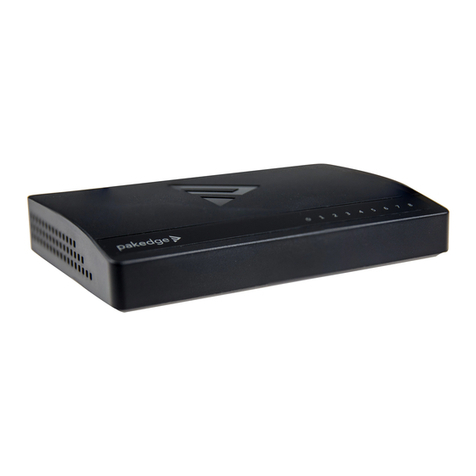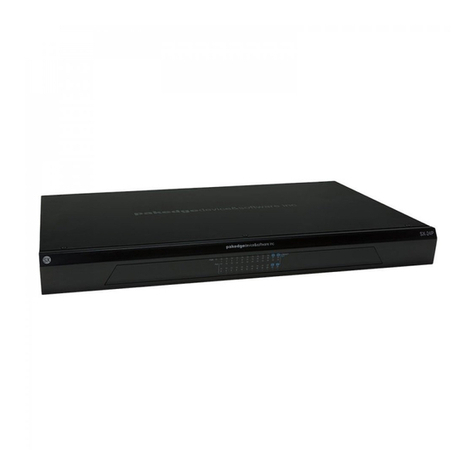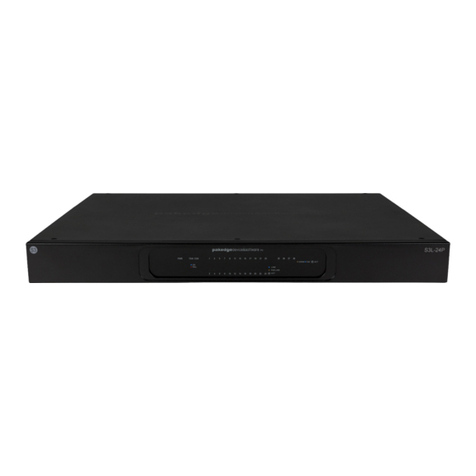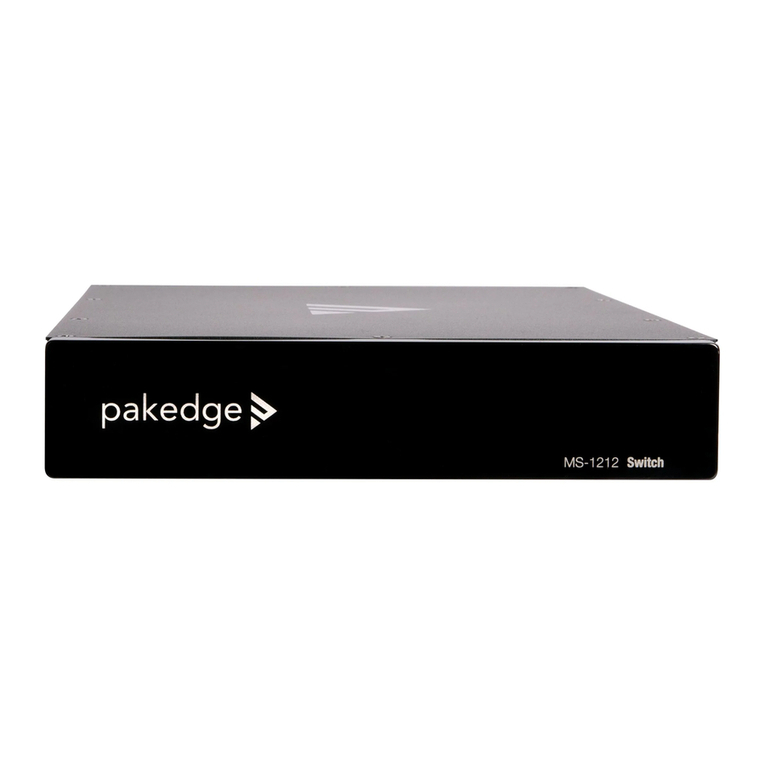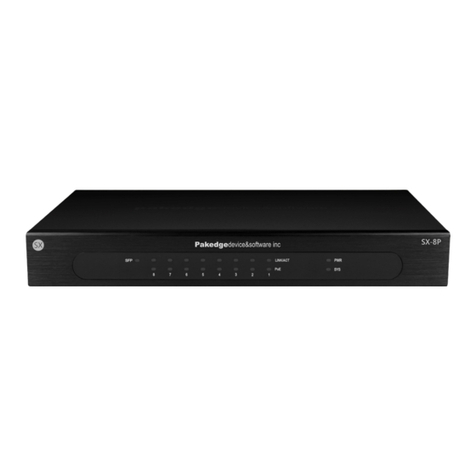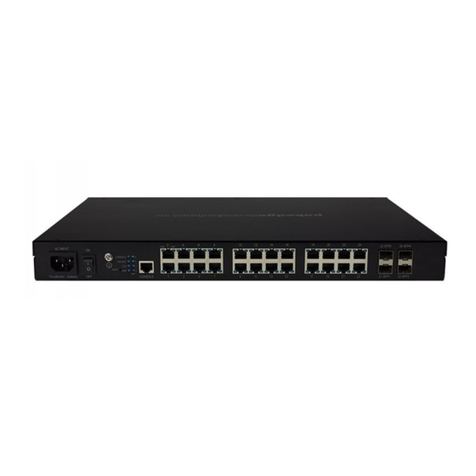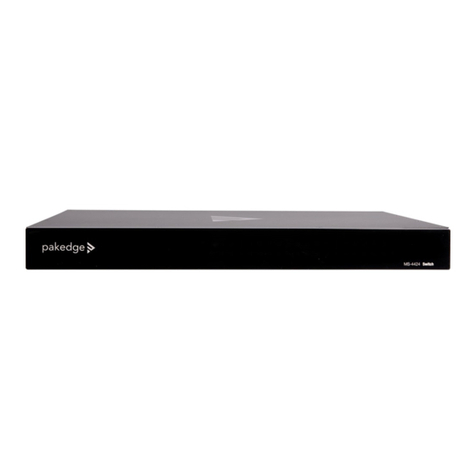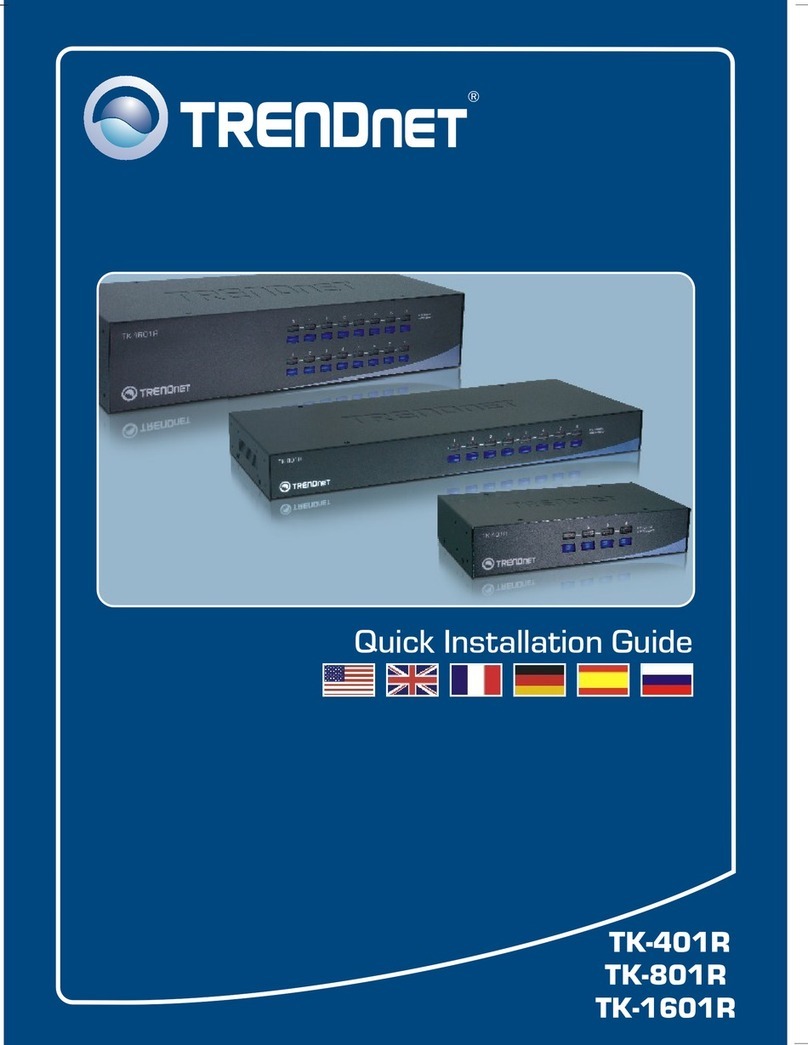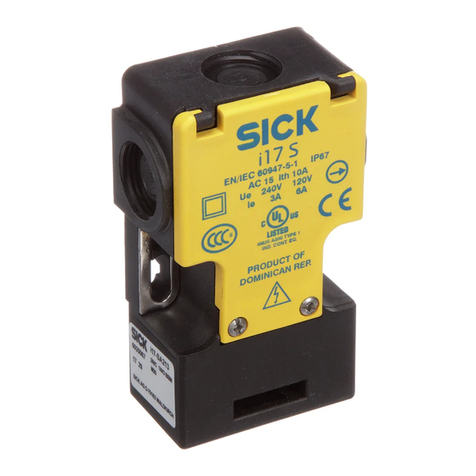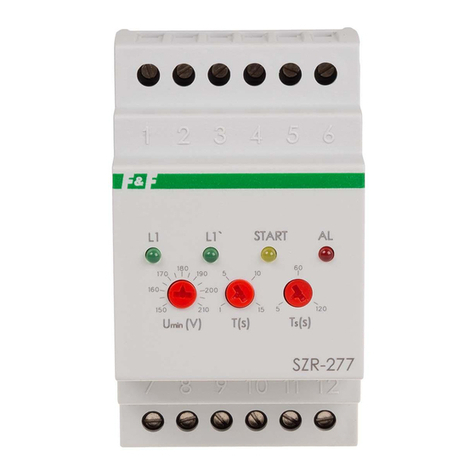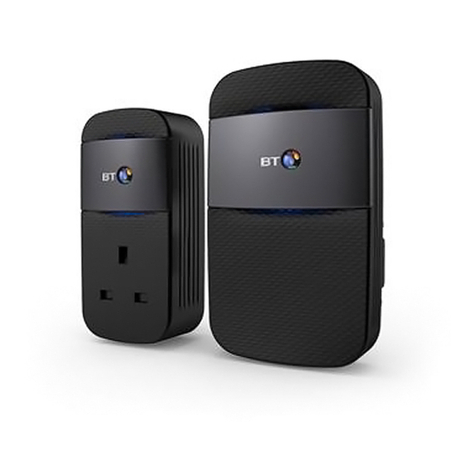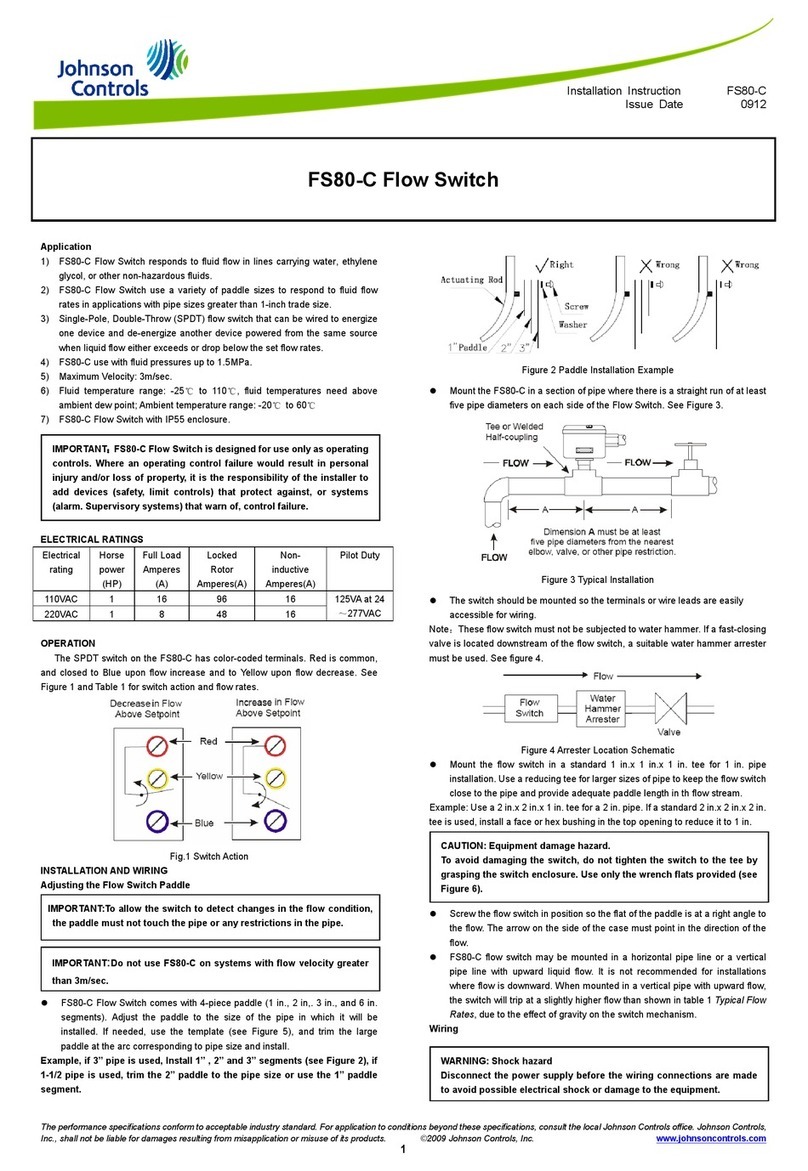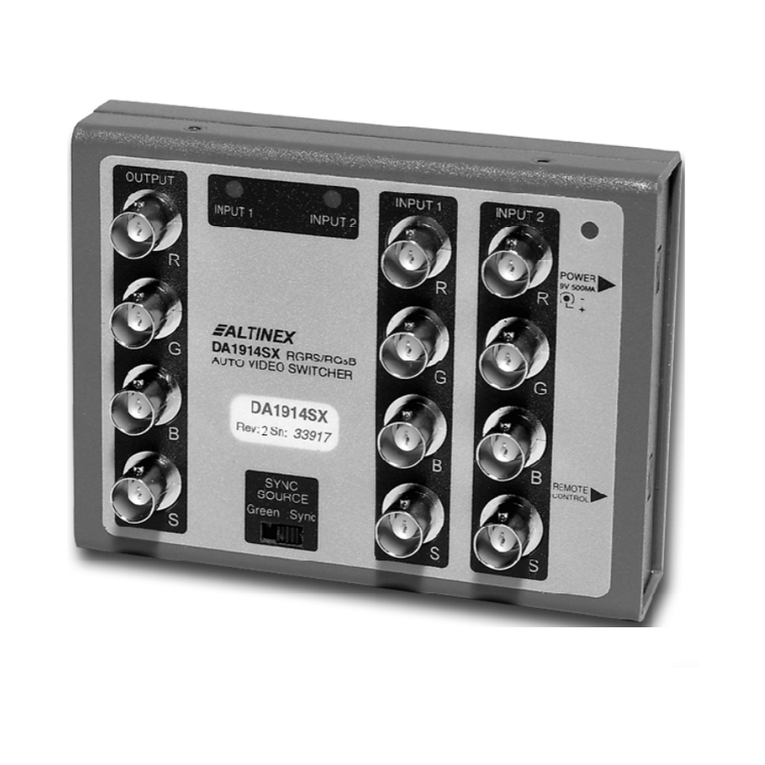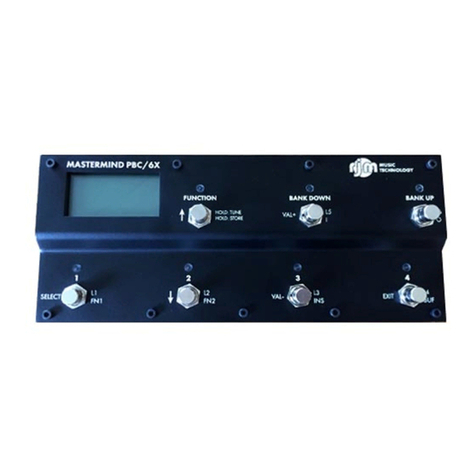55
Preparing to install the switch
The SX-8P allows for multiple installation options. It is possible to AV rack mount, mount to a wall,
and place on a desktop. The included power supply bracket makes mounting with the included
power supply easy to manage in any situation.
Tools required:
• Phillips screwdriver (if using rack-mount brackets)
• Computer with Ethernet interface and a modern web browser
• Optional: An integrated DB-9 port or USB-to-DB9 adapter may be necessary in order to use
the console interface
• Ethernet cable
Installation
1 Remove the switch from the box.
2 Optional: If mounting the switch in a standard 19” AV rack, follow the instructions “Installing
a rack mount” on page 6. If wall mounting the switch, follow the instructions “Installing a
wall mount” on page 10. You may also use the included rubber feet to place the switch on
any desktop.
3 Connect power to the device, then connect an Ethernet cable from your computer to any
LAN port on the switch. You are now ready to congure the switch with an IP address in
your network range.
